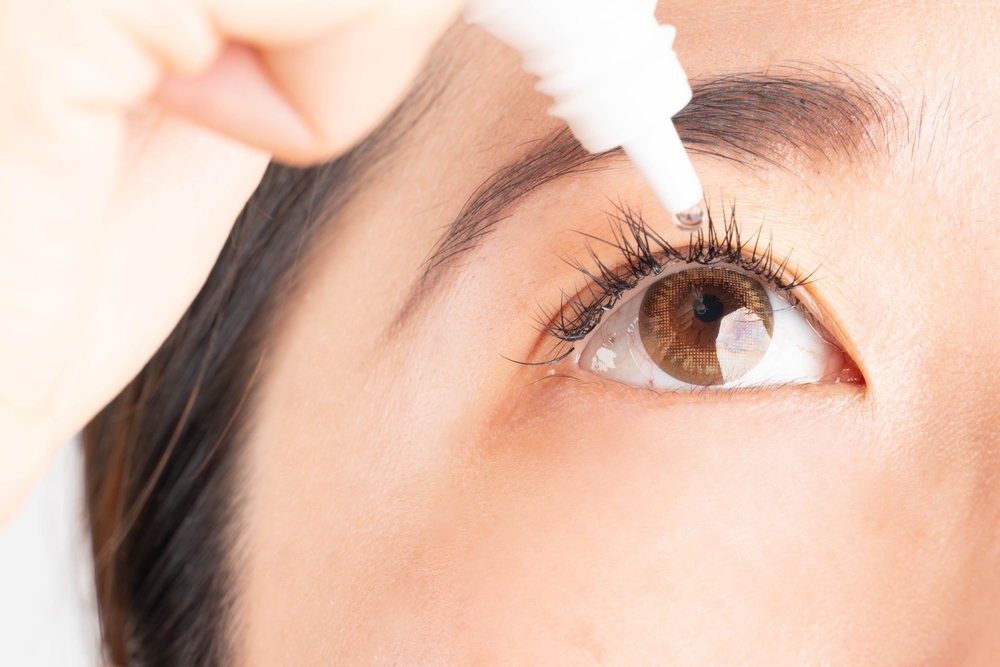
Dry eye is a common condition that can significantly impact your vision and overall eye health, especially when wearing contact lenses. As a contact lens wearer, understanding the causes, prevention, and management of dry eye is crucial to maintaining comfortable and healthy eyes.
Understanding Dry Eye and Its Impact on Vision and Eye Health
Dry eye occurs when your eyes do not produce enough tears or when the tears evaporate too quickly. This can lead to a range of symptoms, including irritation, redness, blurred vision, and a feeling of grittiness or discomfort in your eyes. Dry eye can also increase your risk of eye infections and other complications, making it essential to address the issue promptly.
Contact lens wear can exacerbate dry eye symptoms by disrupting the natural tear film on your eyes. The contact lens acts as a barrier, preventing the even distribution of tears across the eye surface. Additionally, some contact lens materials and designs may contribute to increased evaporation of tears, further exacerbating the problem.
Common Causes of Dry Eye with Contact Lenses
Several factors can contribute to the development of dry eye when wearing contact lenses. One common cause is the material of the lenses themselves. Some contact lens materials, particularly those with low water content or high oxygen permeability, can cause the eyes to become dry more quickly. Additionally, the fit of the lenses plays a crucial role. Poorly fitting lenses can disrupt the natural tear film, leading to uncomfortable dry eye symptoms.
Wearing time is another important factor. Prolonged contact lens wear, especially overnight or for extended periods, can increase tear evaporation and contribute to dryness. Environmental factors, such as exposure to dry, windy, or air-conditioned environments, can also accelerate tear evaporation and make dry eye worse. Lastly, underlying medical conditions like Sjögren's syndrome or blepharitis can exacerbate dry eye, making contact lens wear more challenging for those affected.
Contact Lenses Options Best Suited for Dry Eye
When it comes to managing dry eye with contact lenses, certain lens types and materials may be better suited to your needs. Some of the best contact lenses for dry eye include:
Silicone Hydrogel Lenses: These lenses have a higher oxygen permeability, which can help reduce the risk of dry eye.
Daily Disposable Lenses: Single-use lenses minimize the buildup of deposits and bacteria that can contribute to dry eye.
Scleral Lenses: These large-diameter lenses vault over the cornea, creating a reservoir of tears that can help alleviate dry eye symptoms.
It's important to work closely with your optometrist to determine the best contact lens option for your individual needs and dry eye condition.
The Importance of Proper Contact Lens Care and Maintenance for Dry Eye
Proper contact lens care and maintenance are crucial for managing dry eye. Neglecting these practices can lead to the buildup of deposits, bacteria, and other contaminants that can further irritate your eyes and worsen dry eye symptoms. Follow these best practices for contact lens care and maintenance:
Cleaning and Disinfection: Thoroughly clean and disinfect your contact lenses according to the manufacturer's instructions, using the recommended solutions.
Replacement Schedule: Replace your contact lenses as recommended, whether that's daily, weekly, or monthly, to ensure optimal lens performance and eye health.
Lens Case Hygiene: Clean your contact lens case regularly to prevent the growth of harmful bacteria. Replace your case every one to three months.
Hydration: Drink plenty of water and use preservative-free eye drops to keep your eyes well-hydrated while wearing contact lenses.
By prioritizing proper contact lens care and maintenance, you can help reduce the risk of dry eye and maintain comfortable, healthy eyes.
Seeking Professional Help for Dry Eye with Contact Lenses
If you continue to experience persistent or severe dry eye symptoms while wearing contact lenses, it's important to seek the advice of an eye doctor. They can perform a comprehensive eye examination, identify the underlying causes of your dry eye, and develop a customized treatment plan to address your specific needs. Your doctor may recommend a combination of treatments, such as:
Prescription eye drops or ointments to help increase tear production or reduce inflammation
Specialized contact lens fittings or designs to improve tear distribution and reduce evaporation
In-office procedures, such as meibomian gland expression or intense pulsed light therapy, to address underlying causes of dry eye
Lifestyle modifications, such as adjusting your environment or using a humidifier
By working closely with your optometrist, you can find effective solutions to manage your dry eye and maintain comfortable, healthy eyes while wearing contact lenses.
Taking Care of Your Eyes While Wearing Contact Lenses
Navigating dry eye with contact lenses requires a comprehensive approach that addresses the underlying causes, prevention, and management of this condition. By understanding the impact of dry eye on your vision and eye health, choosing the right contact lenses, practicing proper care and maintenance, and seeking professional help when needed, you can maintain comfortable and healthy eyes while enjoying the benefits of contact lens wear.
If you're struggling with dry eye while wearing contact lenses, schedule a consultation with Eyes & Optics. We can help you find the best solutions to manage your dry eye and keep your eyes healthy and comfortable. Visit our office in Farmington Hills, Michigan, or call (248) 788-1610 to book an appointment today.









